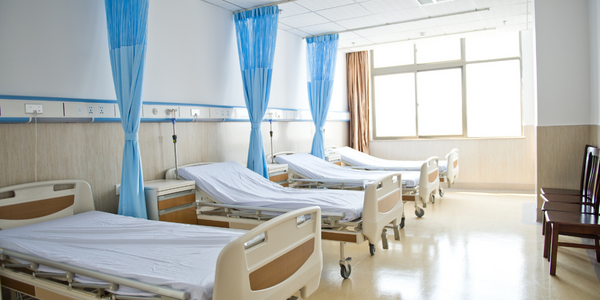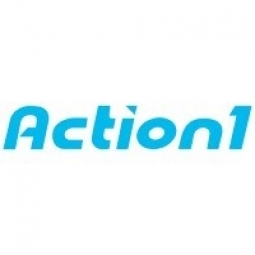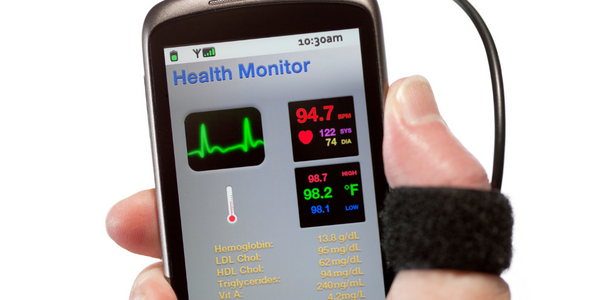Technology Category
- Platform as a Service (PaaS) - Application Development Platforms
- Platform as a Service (PaaS) - Device Management Platforms
Applicable Industries
- Education
- Healthcare & Hospitals
Use Cases
- Intelligent Packaging
- Inventory Management
About The Customer
Health Access for All, also known as Angeles Community Health Center (ACHC), is a community-based nonprofit organization based in Los Angeles, California. The organization is committed to providing high-quality medical, dental, and behavioral health care services and education in an environment of caring, respect, and dignity. ACHC operates across four locations in Los Angeles and employs about 150 staff members. The IT infrastructure of the organization is managed by Mike Straffin, the IT Director, who is responsible for managing all the organization’s computers.
The Challenge
Angeles Community Health Center (ACHC), a nonprofit organization providing medical, dental, and behavioral health care services, was facing a significant challenge in managing software deployment across its 150 staff members spread across four locations. The IT Director, Mike Straffin, was tasked with the responsibility of managing all the organization’s computers and ensuring efficient deployment of software applications and updates. The existing manual approaches, such as Group Policy, proved to be ineffective, leading to a pressing need for a more efficient solution. The urgency for a solution escalated when Mike received a request to deploy WebEx to all machines within a short notice of two days.
The Solution
In response to the challenge, Mike turned to Action1, a recommendation from his peers. After a quick session with an Action1 engineer, Mike discovered that the platform could not only help him deploy software and manage updates but also provide a wealth of other useful functionality, including reporting, endpoint management, and more. Action1 streamlined the software deployment process by automatically connecting to the agent and installing the software behind the scenes. This automation saved significant time per machine, adding up to about one day every week. Additionally, Action1 provided robust patch management, enabling Mike to automate patching across all his remote and in-office endpoints. Its intelligent policies allowed him to establish a process that met his organization’s needs and ensured timely installation of all updates, thereby enhancing security.
Operational Impact
Quantitative Benefit

Case Study missing?
Start adding your own!
Register with your work email and create a new case study profile for your business.
Related Case Studies.

Case Study
Hospital Inventory Management
The hospital supply chain team is responsible for ensuring that the right medical supplies are readily available to clinicians when and where needed, and to do so in the most efficient manner possible. However, many of the systems and processes in use at the cancer center for supply chain management were not best suited to support these goals. Barcoding technology, a commonly used method for inventory management of medical supplies, is labor intensive, time consuming, does not provide real-time visibility into inventory levels and can be prone to error. Consequently, the lack of accurate and real-time visibility into inventory levels across multiple supply rooms in multiple hospital facilities creates additional inefficiency in the system causing over-ordering, hoarding, and wasted supplies. Other sources of waste and cost were also identified as candidates for improvement. Existing systems and processes did not provide adequate security for high-cost inventory within the hospital, which was another driver of cost. A lack of visibility into expiration dates for supplies resulted in supplies being wasted due to past expiry dates. Storage of supplies was also a key consideration given the location of the cancer center’s facilities in a dense urban setting, where space is always at a premium. In order to address the challenges outlined above, the hospital sought a solution that would provide real-time inventory information with high levels of accuracy, reduce the level of manual effort required and enable data driven decision making to ensure that the right supplies were readily available to clinicians in the right location at the right time.

Case Study
Gas Pipeline Monitoring System for Hospitals
This system integrator focuses on providing centralized gas pipeline monitoring systems for hospitals. The service they provide makes it possible for hospitals to reduce both maintenance and labor costs. Since hospitals may not have an existing network suitable for this type of system, GPRS communication provides an easy and ready-to-use solution for remote, distributed monitoring systems System Requirements - GPRS communication - Seamless connection with SCADA software - Simple, front-end control capability - Expandable I/O channels - Combine AI, DI, and DO channels

Case Study
Driving Digital Transformations for Vitro Diagnostic Medical Devices
Diagnostic devices play a vital role in helping to improve healthcare delivery. In fact, an estimated 60 percent of the world’s medical decisions are made with support from in vitrodiagnostics (IVD) solutions, such as those provided by Roche Diagnostics, an industry leader. As the demand for medical diagnostic services grows rapidly in hospitals and clinics across China, so does the market for IVD solutions. In addition, the typically high cost of these diagnostic devices means that comprehensive post-sales services are needed. Wanteed to improve three portions of thr IVD:1. Remotely monitor and manage IVD devices as fixed assets.2. Optimizing device availability with predictive maintenance.3. Recommending the best IVD solution for a customer’s needs.

Case Study
HaemoCloud Global Blood Management System
1) Deliver a connected digital product system to protect and increase the differentiated value of Haemonetics blood and plasma solutions. 2) Improve patient outcomes by increasing the efficiency of blood supply flows. 3) Navigate and satisfy a complex web of global regulatory compliance requirements. 4) Reduce costly and labor-intensive maintenance procedures.

Case Study
Cloud-based healthcare solution for Royal Philips
Royal Philips wanted to launch its cloud-based healthcare solution HealthSuite Digital Platform in China to deliver services to help cope with challenges related to urbanization and population growth. Philips wanted to achieve this goal by combining mobile, cloud computing and big data technologies. To bring this platform and product to market, Philips required cloud computing and local technical service capabilities in China, in addition to a flexible IT infrastructure that could handle user requests.








